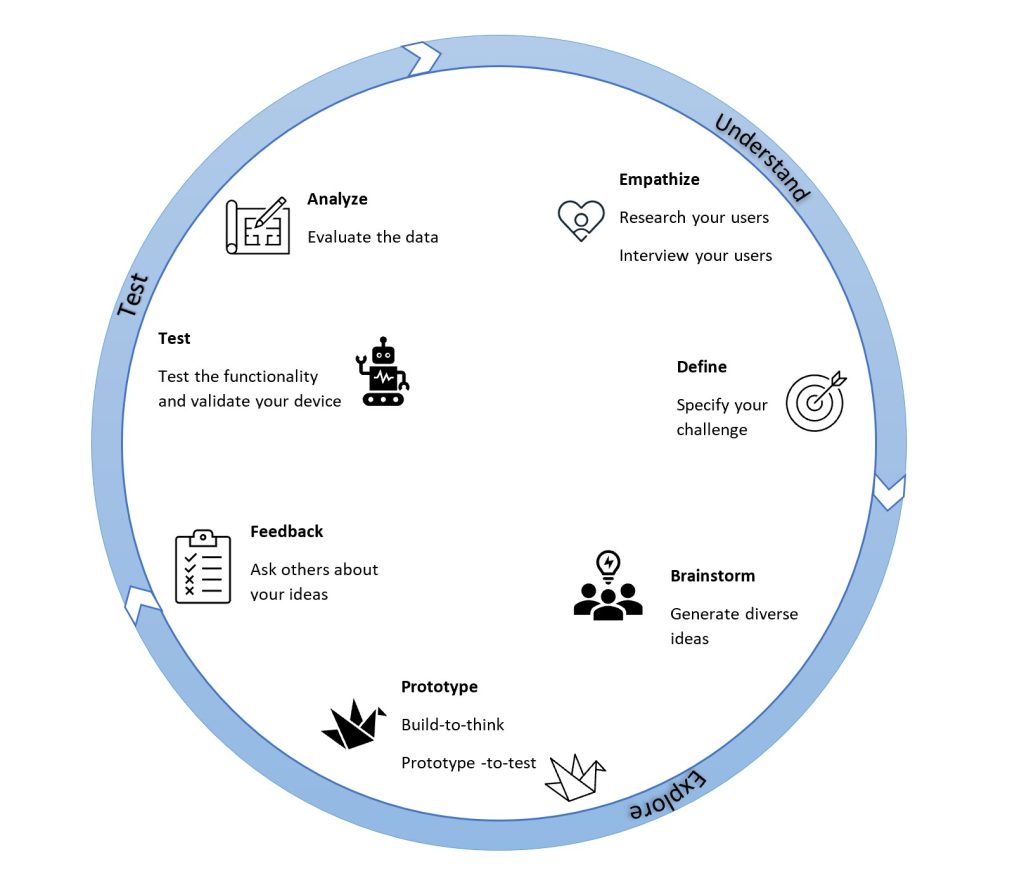2 Human Centered Design
Hasso Plattner Institute of Design at Stanford and Frances Davis
Human Centered Design
The design process is a series of steps that are used for developing a product or system. The process includes three broad steps – understand, explore, and test. Notice in the figure below that the steps are not a linear but iterative process that allows the steps to be repeated multiple times to refine the product under development. The iterative process does not require you to restart the cycle every time, for instance, you might repeat the explore phase multiple times until you are ready to build a higher fidelity prototype that you want to test.

The remainder of this section will explore design process in more detail. Understanding is broken into two sections Empathize and Define. Empathize discusses how you can gather more information on the group you are designing for using primary and secondary resources. Define explains how to specify what design challenge you are taking on. Explore is broken into two sections Brainstorm and Prototype which focus on how to come up with a large set of diverse ideas and how to build physical representations of those ideas, respectively. Testing is covered in a single chapter and explores the different types of test and analysis you might want to perform.
What makes a design process human centered?
Not all engineering problems are design problems. Not all design processes are human centered.
If there is a universal right answer to your question – independent of individuals, circumstance, and culture – then you don’t have a design challenge. Rather this is an optimization or engineering problem.
A human-centered design approach helps you excel in understanding how people think and act, and use that understanding to bring new clarity to the challenge by reframing it. The value of this is only relevant in problems that have to do with people. These problems are inherently subjective.
Even very simple design problems are human centered, consider the case of Norman Doors.
Are these human, subjective challenges?
Optimizing a turbine –
No. This is an engineering problem.
Creating a better vaccination process –
Yes. Patients, doctors, pharmacists, etc. are all human elements in this system.
Developing a higher efficacy vaccine –
No and yes. Medical science would be one approach to this challenge. At the same time, the effectiveness of a vaccine is determined by many human factors as well as the vaccine itself. Design has a role there.
Making a supply chain more efficient –
Maybe. Are there benefits to be gained by understanding the people involved in the design chain and their behavior? Then this could be a good design challenge.
Redesigning a website –
Yes, but . . . reframe it. Take a step back from the layout and coding of the website, and ask yourself what experience you trying to create for people. Then understanding your users becomes important, and design methodology becomes more useful.

